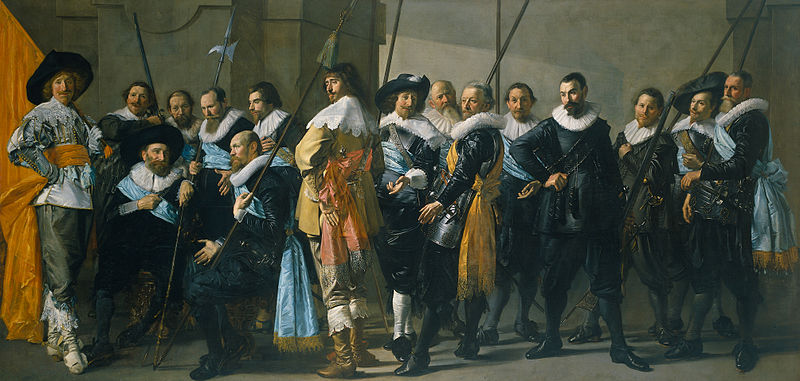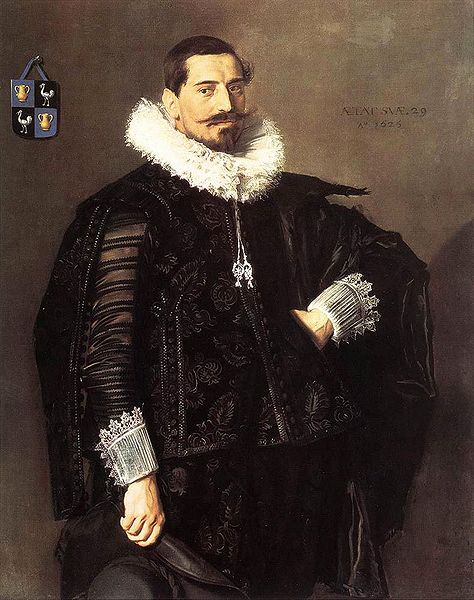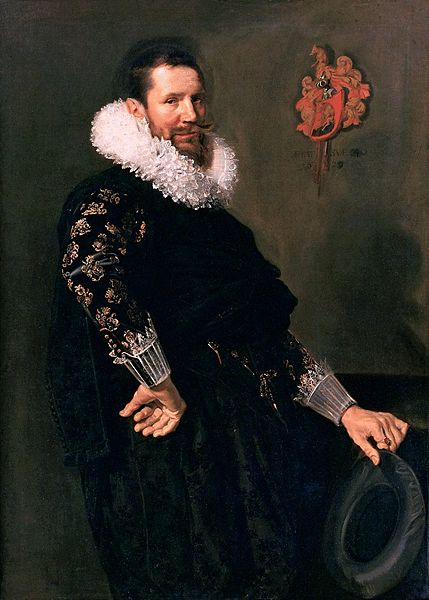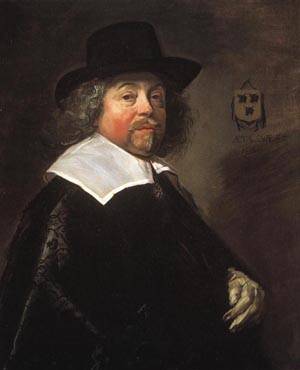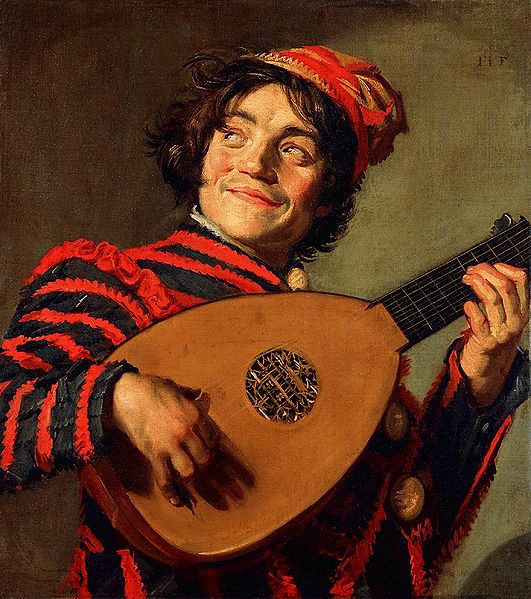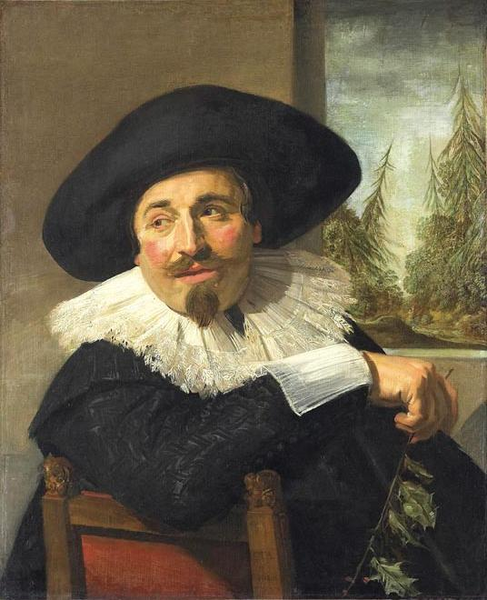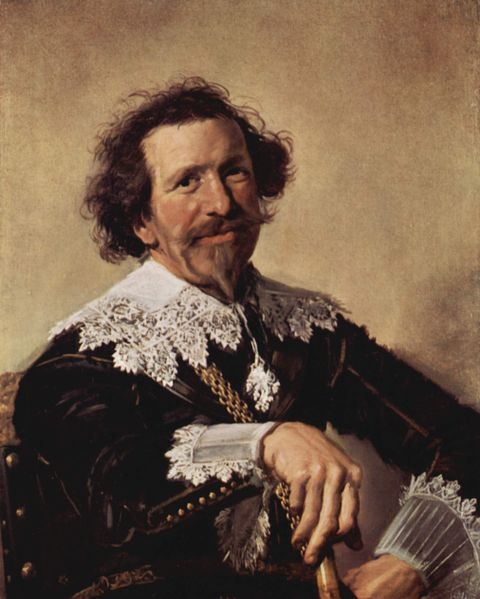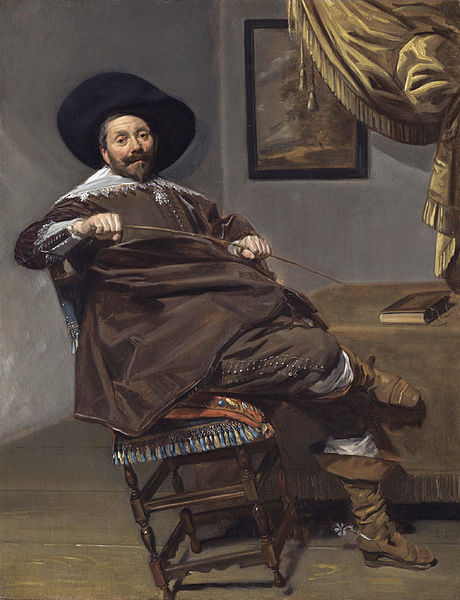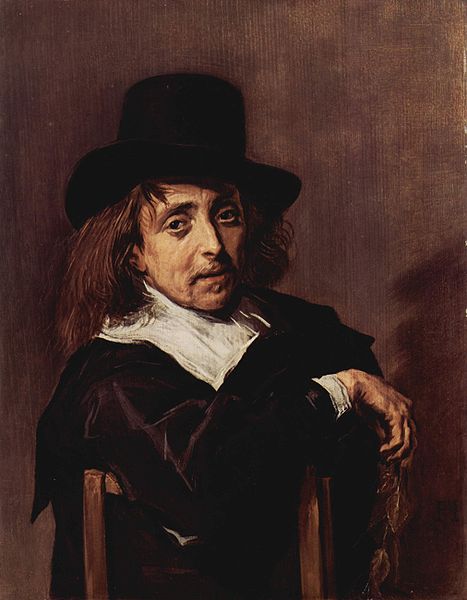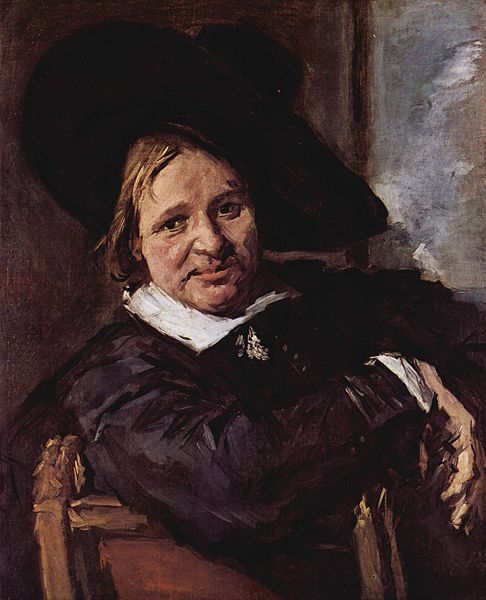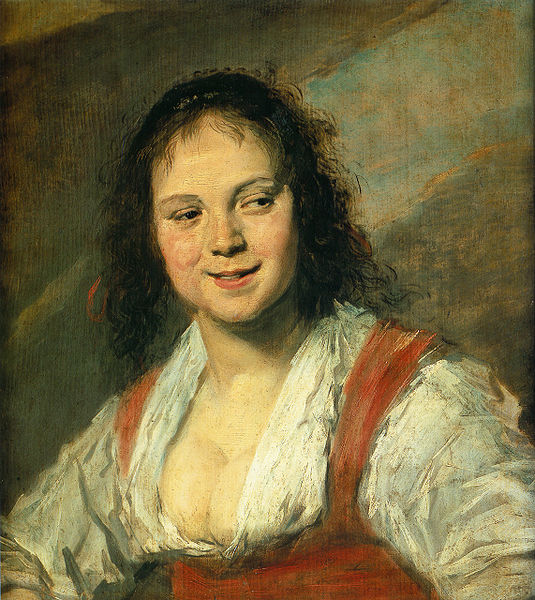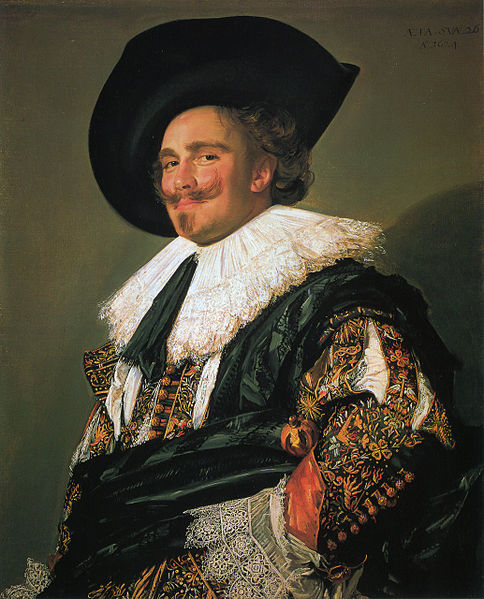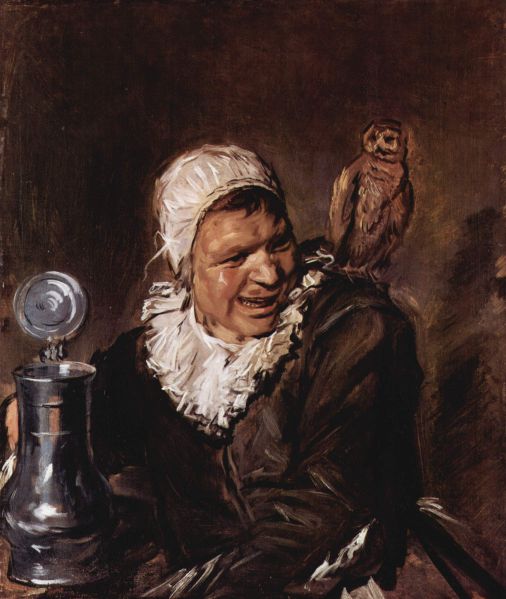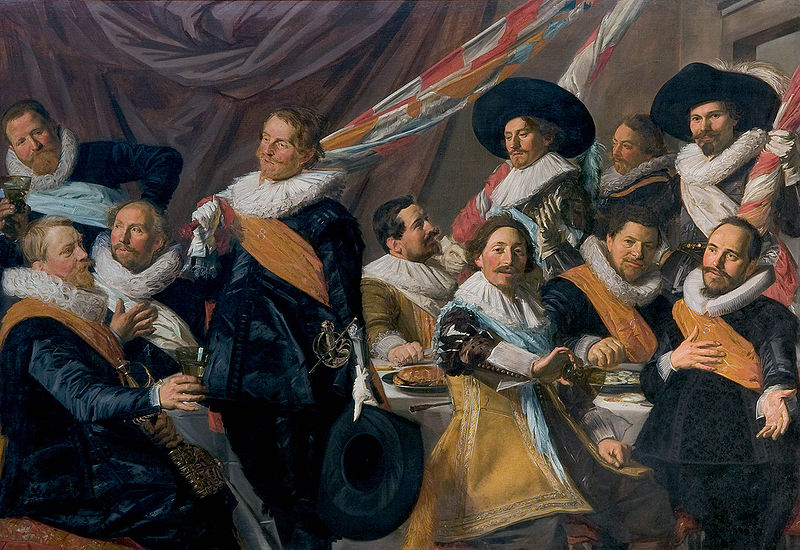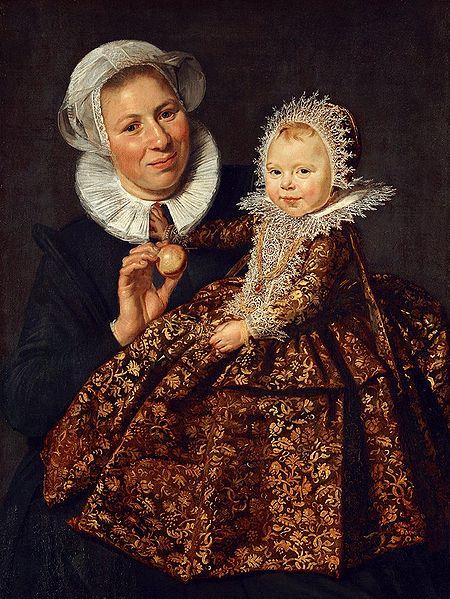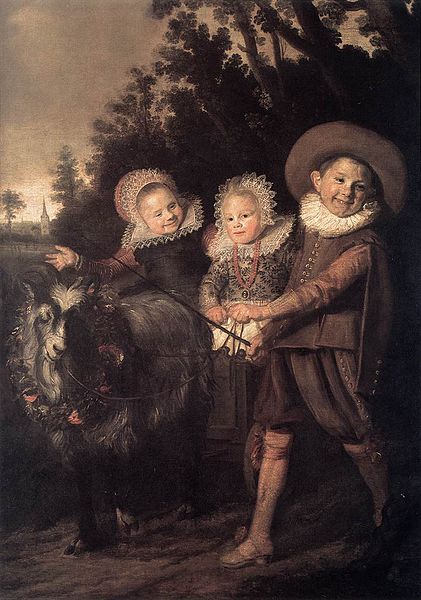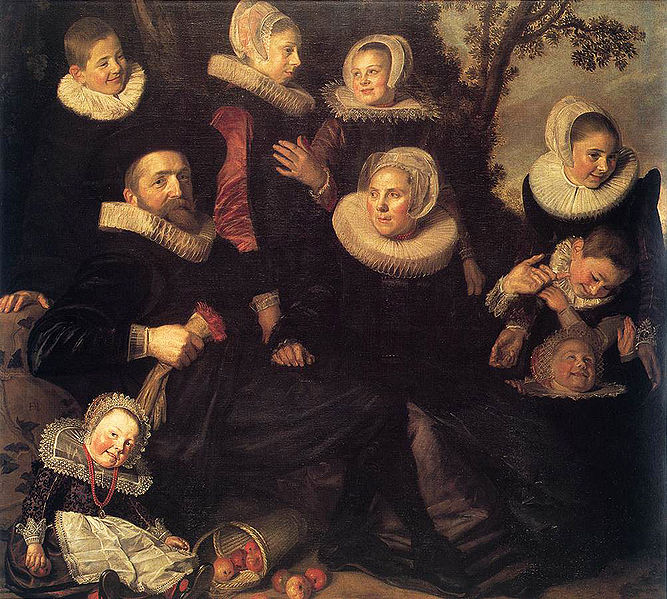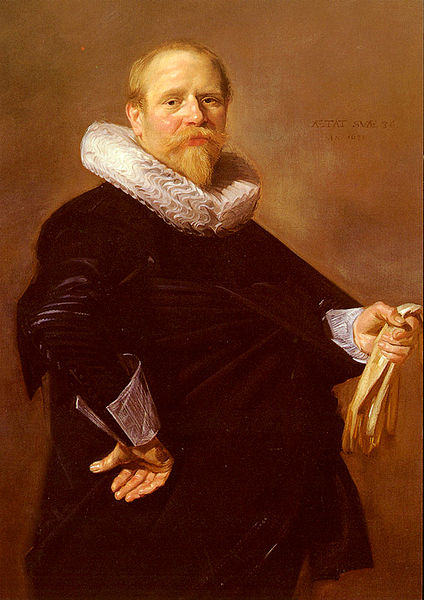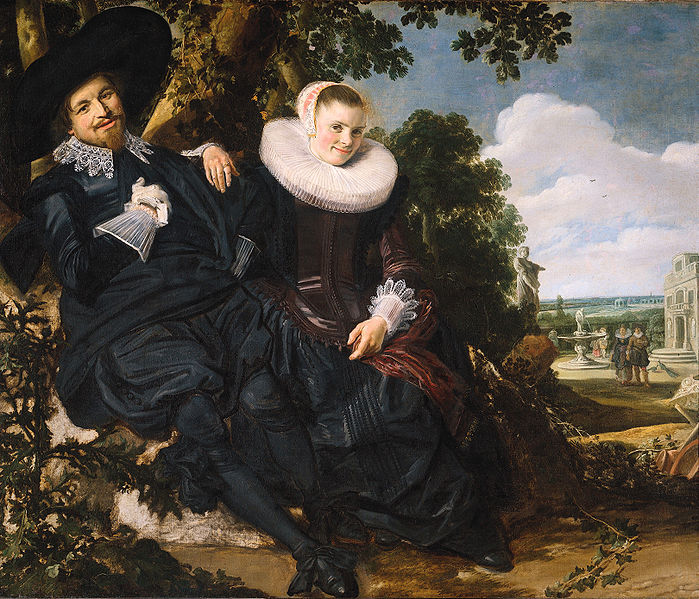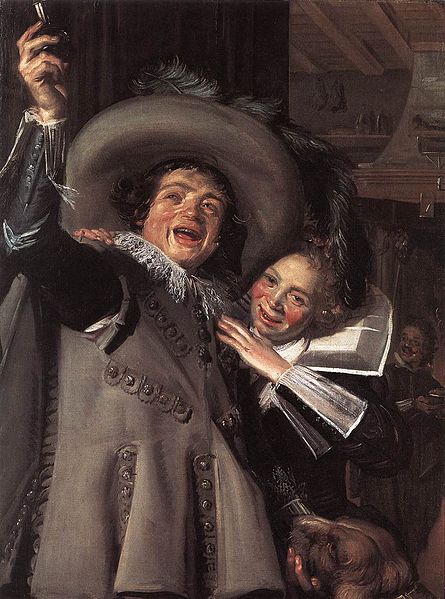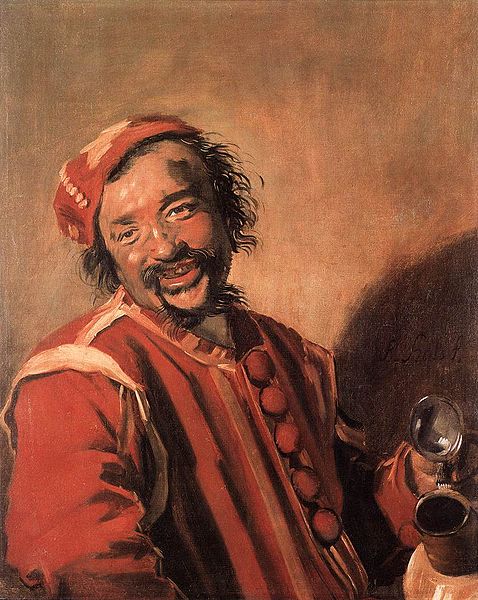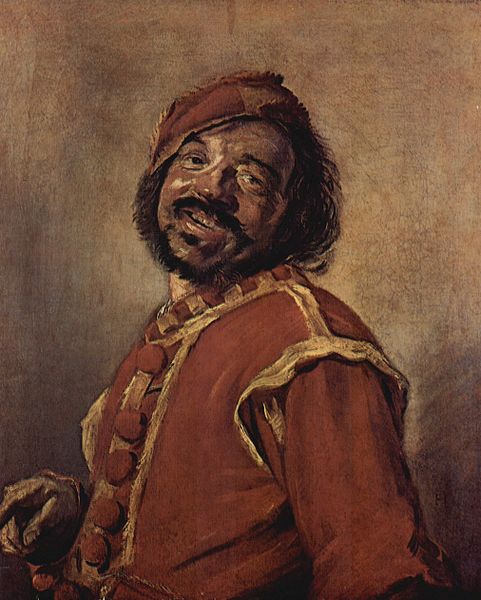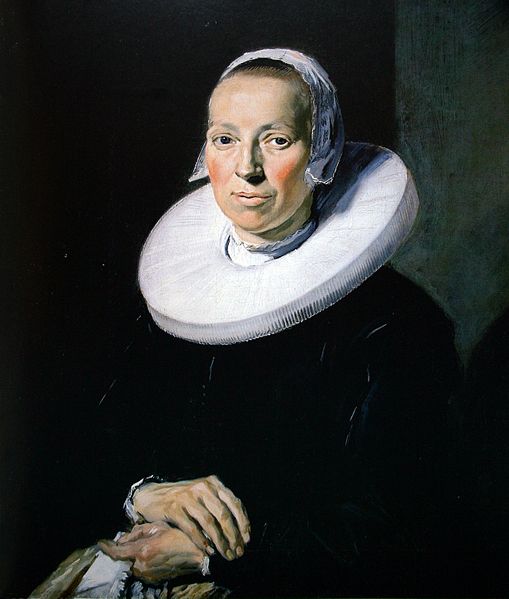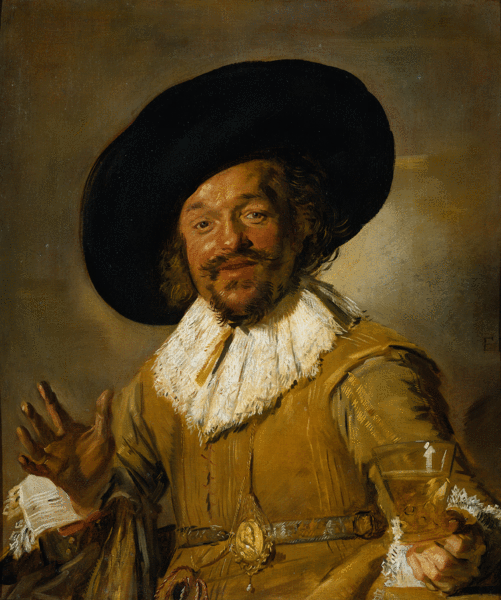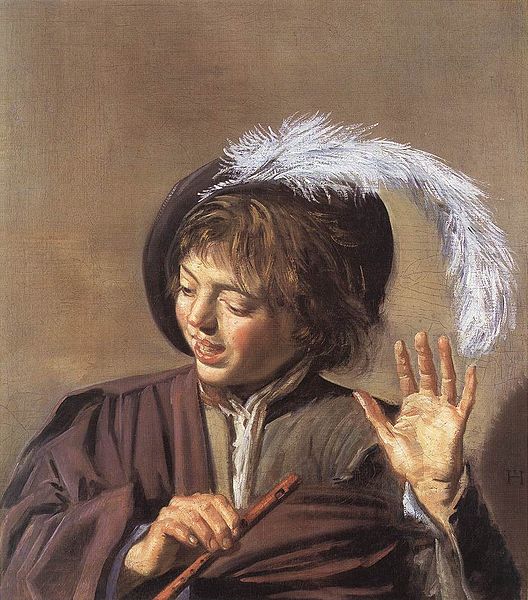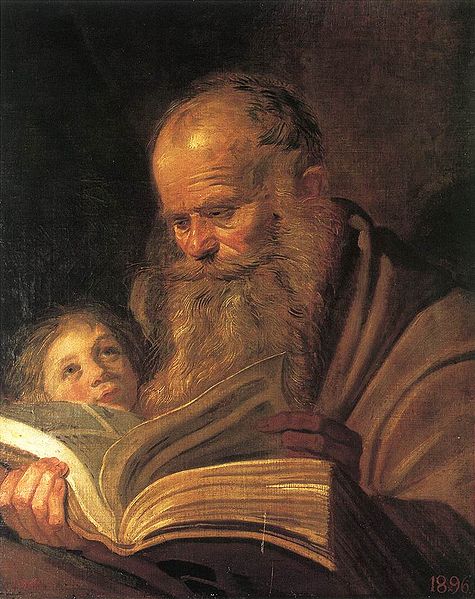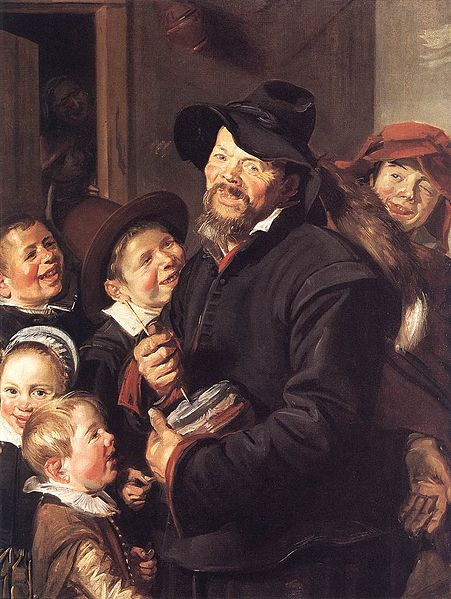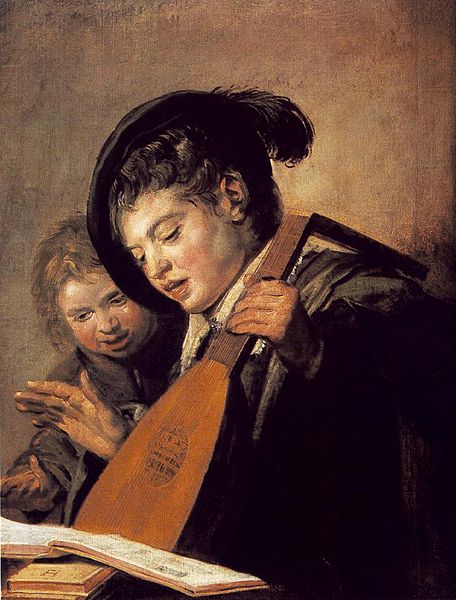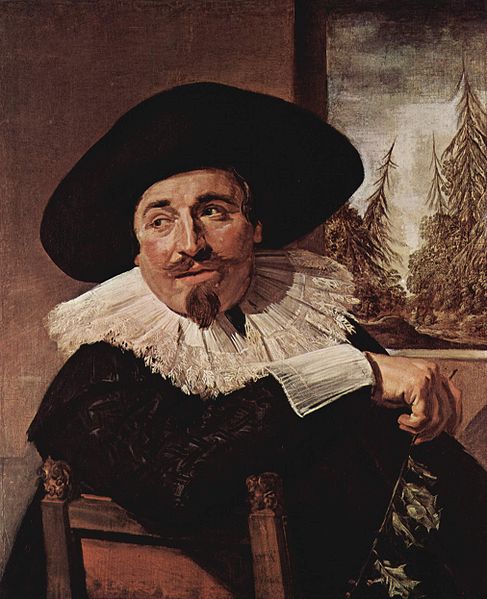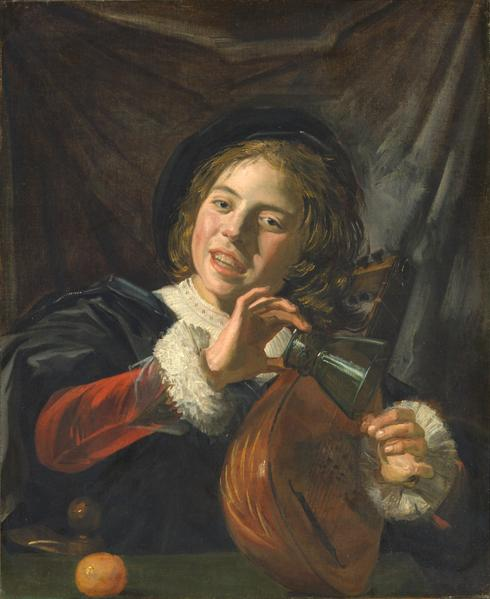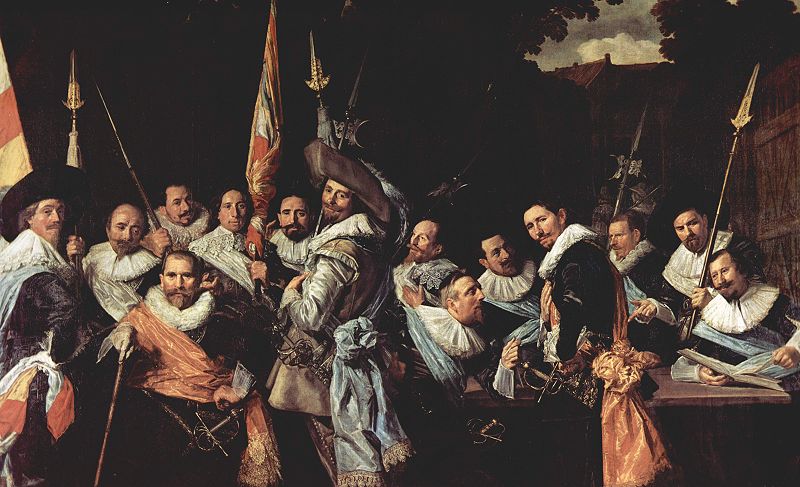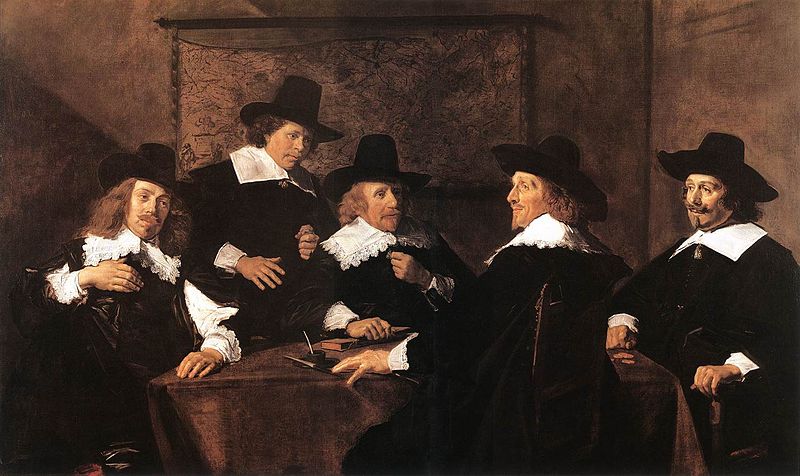<Back to Index>
- Painter Jan Brueghel the Elder, 1568
- Painter Frans Hals (the Elder), 1580
PAGE SPONSOR
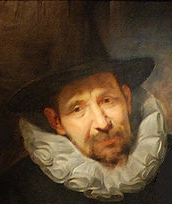
Jan Brueghel the Elder (1568 – 13 January 1625) was a Flemish painter, son of Pieter Bruegel the Elder and father of Jan Brueghel the Younger. Nicknamed "Velvet" Brueghel, "Flower" Brueghel, and "Paradise" Brueghel, of which the latter two were derived from his floral still lifes which were his favored subjects, while the former may refer to the velveteen sheen of his colors or to his habit of wearing velvet.
He was born in Brussels. His father died in 1569, and then, following the death of his mother in 1578, Jan, along with his brother Pieter Brueghel the Younger and sister Marie, went to live with their grandmother Mayken Verhulst (widow of Pieter Coecke van Aelst). She was an artist in her own right, and according to Carel van Mander, possibly the first teacher of the two sons. The family moved to Antwerp sometime after 1578. In about 1589 Jan traveled to Italy, probably via Cologne. There he resided first in Naples, where his patron was Francesco Carracciolo. Next he moved to Rome, working for several discerning cardinals including, most famously, Federico Borromeo. It was in the company of Borromeo that Brueghel left Rome and took up residence in Milan, where he was part of the Cardinal's household. In the summer of 1596 he returned to Antwerp, where he remained for the rest of his life apart from short journeys to Prague and to the Dutch Republic.
While in Italy he applied himself principally to landscapes and history paintings, including Biblical narratives and scenes from mythology and ancient history. Back in Antwerp he continued these types of subject matter but also acquired considerable reputation by his flower paintings and allegories. He formed a style more independent of his father's than did his brother Pieter the Younger.
Many of his paintings are collaborations in which figures by other painters were placed in landscapes painted by Jan Brueghel; in other cases, Brueghel painted the figures into another artist's landscape or architectural interior. The most famous of his collaborators was Peter Paul Rubens in several of his small pictures — such as his "Vertumnus and Pomona," the "Satyr viewing the Sleeping Nymph," and the "Terrestrial Paradise.".
He had a studio in Antwerp, where he died from cholera on 13 January 1625.
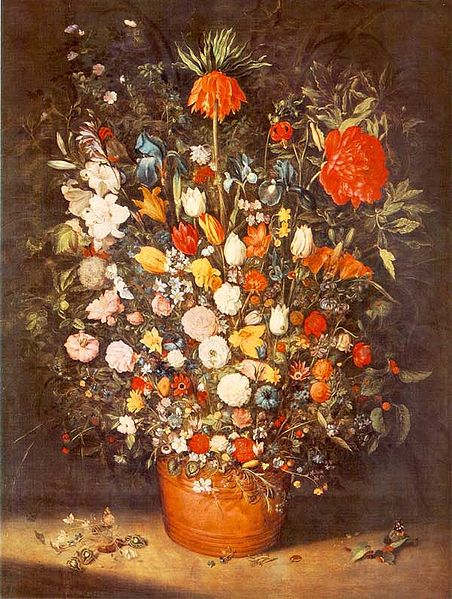
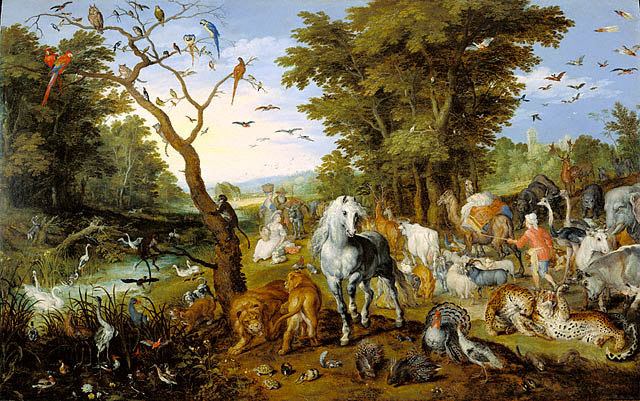
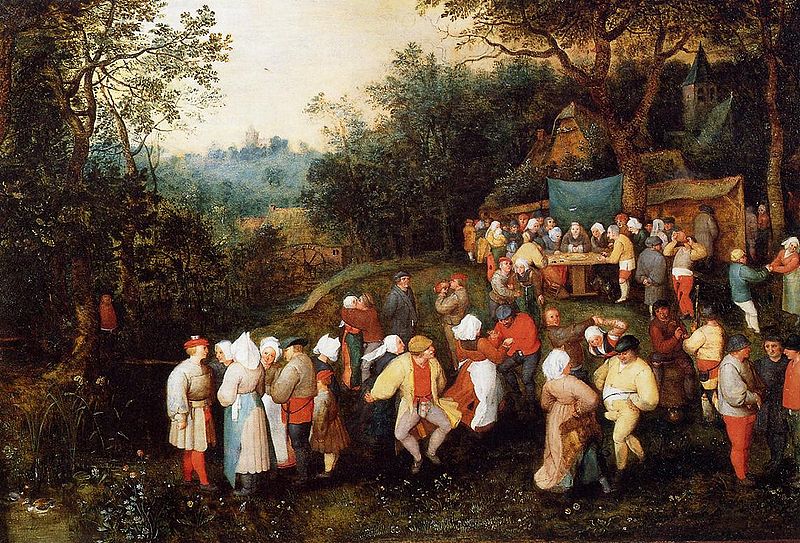
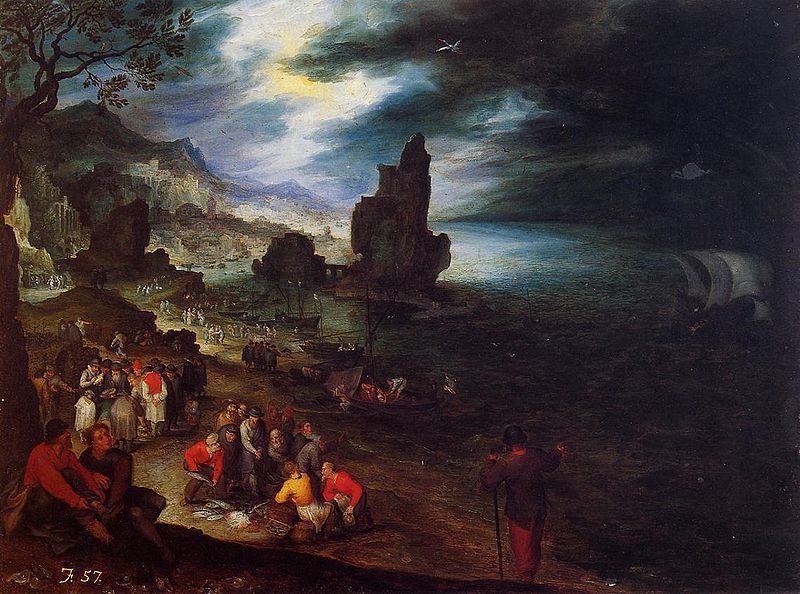
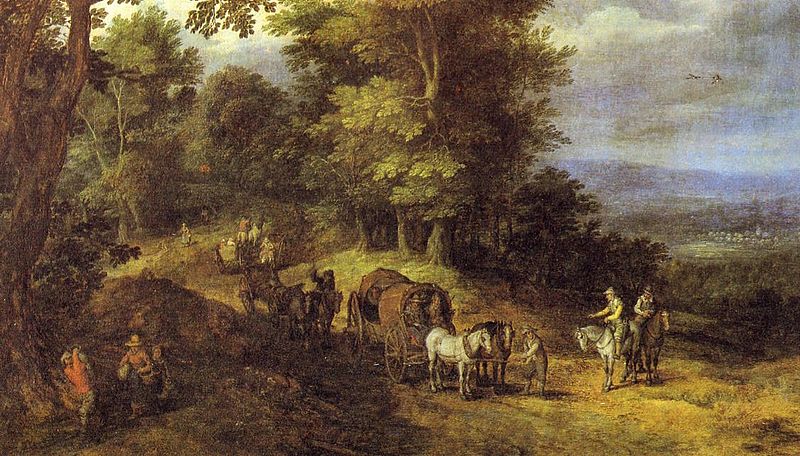
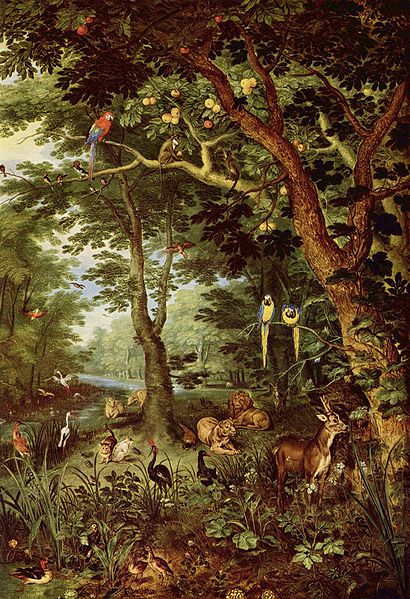
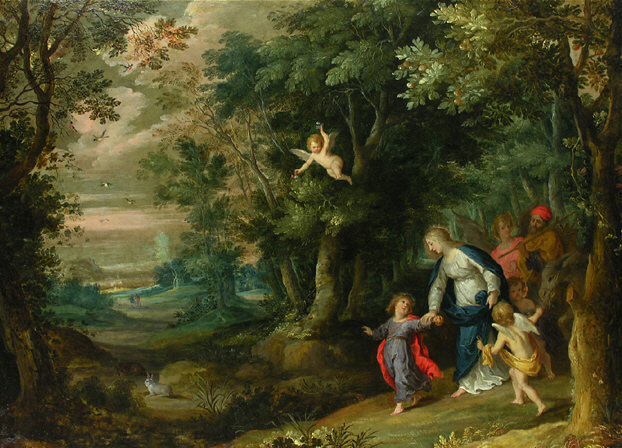
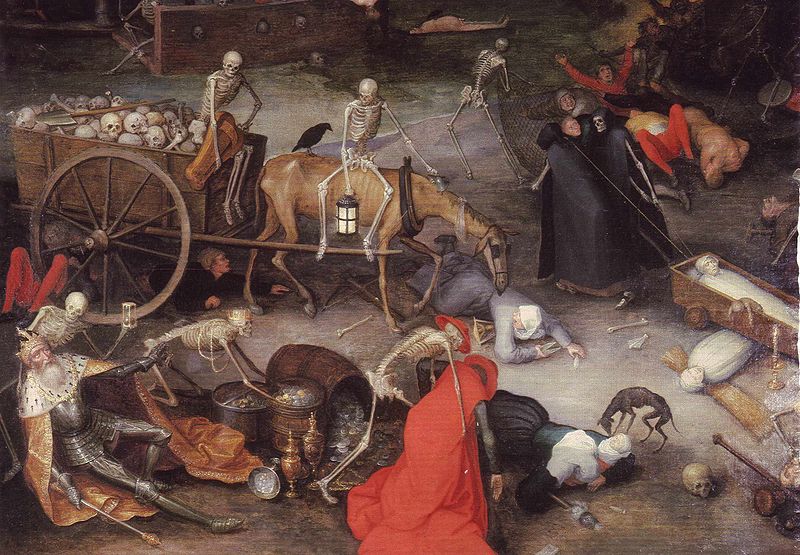
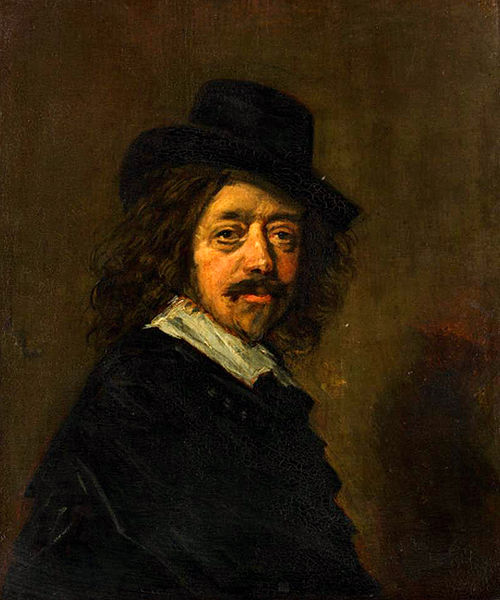
Frans Hals (the Elder) (c. 1580 – 26 August 1666) was a Dutch Golden Age painter. He is notable for his loose painterly brushwork, and helped introduce this lively style of painting into Dutch art. Hals was also instrumental in the evolution of 17th century group portraiture.
Hals was born in 1580 or 1581, in Antwerp. Like many, Hals' family fled during the Fall of Antwerp (1584 - 1585) from the Spanish Netherlands to Haarlem, where he lived for the remainder of his life. Hals studied under another Flemish émigré, Karel van Mander (1548 – 1606), whose Mannerist influence, however, is not noticeably visible in his work. At the age of 27, he became a member of the city's painter's corporation, the Haarlem Guild of Saint Luke, and he started to earn money as an art restorer for the city council. He worked on their large art collection that Karel van Mander had described in his book The Painting - Book (Middle Dutch: Het Schilder - Boeck), published in 1604. The most notable of these were the works of Geertgen tot Sint Jans, Jan van Scorel and Jan Mostaert, that hung in de St. Jans kerk in Haarlem. The restoration work was paid for by the city of Haarlem, since all religious art was confiscated after the iconoclasm, but the entire collection of paintings was not formally possessed by the city council until 1625, after the city fathers had decided which paintings were suitable for the city hall. The remaining art that was considered too "Roman Catholic" was sold to Cornelis Claesz van Wieringen, a fellow guild member, on the grounds that he remove it from the city. It was under these circumstances that Hals began his career in portraiture, since the market for religious themes had disappeared.
The earliest known example of Hals' own art is the 1611, Jacobus Zaffius. His 'breakthrough' came in 1616, with the life size group portrait, The Banquet of the Officers of the St George Militia Company. His most noted portrait today is the one he made in 1649 of René Descartes.
Historians have erroneously reported that he mistreated his first wife, Anneke Hermansz (Annetje Harmensdochter Abeel), based on records that a Frans Hals was charged with spousal abuse in Haarlem in 1616. However, as Seymour Slive has pointed out, the Frans Hals in question was not the artist, but another Haarlem resident of the same name. Indeed, at the time of these charges, the artist had no wife to mistreat as Anneke had died during labor earlier in 1616. Similarly, historical accounts of Hals' propensity for drink have been largely based on embellished anecdotes of his early biographers, namely Arnold Houbraken, with no direct evidence existing documenting such. In 1617, he married Lysbeth Reyniers, the young daughter of a fishmonger that he had taken in to look after his two children. They married in Spaarndam, a small village outside the banns of Haarlem, because she was already 8 months pregnant. Frans Hals was a devoted father and they went on to have eight children. Where Hals contemporaries such as Rembrandt moved their households according to the caprices of patrons, Hals remained in Haarlem and insisted that his customers came to him. According to the Haarlem archives, a militia piece that Hals started in Amsterdam was finished by another painter because Hals refused to paint in Amsterdam, insisting that the militiamen come to Haarlem to sit for their portraits.
Although Hals' work was in demand throughout his life, he lived so long that he eventually went out of style as a painter and experienced financial difficulties. In addition to his painting, he continued throughout his life to work as an restorer, art dealer, and art tax expert for the city councilors. His creditors took him to court several times, and to settle his debt with a baker in 1652 he sold his belongings. The inventory of the property seized mentions only three mattresses and bolsters, an armoire, a table and five pictures (these were by himself, his sons, van Mander, and Maarten van Heemskerck). Left destitute, the municipality gave him an annuity of 200 florins in 1664.
At a time when the Dutch nation fought for independence, Hals appeared in the ranks of the schutterij, a military guild. This fact found in the Haarlem archives has led to speculation that Hals made a self portrait in his 1639 painting of the St. Joris company, though this has never been confirmed. It was not normal for mere members to be painted, that privilege was reserved only for the officers. It is possible that he received the privilege as thanks for painting that company 3 times. Hals was also a member of a local chamber of rhetoric, and in 1644 chairman of the Painters Corporation at Haarlem.
Frans Hals died in Haarlem in 1666 and was buried in the city's St. Bavo Church. His widow later died obscurely in a hospital after seeking outdoor relief from the guardians of the poor.
Hals is best known for his portraits, mainly of wealthy citizens, like Pieter van den Broecke and Isaac Massa, whom he painted three times. He also painted large group portraits, many of which showed civil guards. He was a Baroque painter who practiced an intimate realism with a radically free approach. His pictures illustrate the various strata of society; banquets or meetings of officers, sharpshooters, guildsmen, admirals, generals, burgomasters, merchants, lawyers, and clerks, itinerant players and singers, gentlefolk, fishwives and tavern heroes.
In group portraits, such as the Archers of St. Hadrian, Hals captures each character in a different manner. The faces are not idealized and are clearly distinguishable, with their personalities revealed in a variety of poses and facial expressions.
He studied under the painter and historian Karel van Mander (Hals owned some paintings by van Mander that were amongst the items sold to pay his bakery debt in 1652).
Hals was fond of daylight and silvery sheen, while Rembrandt used golden glow effects based upon artificial contrasts of low light in immeasurable gloom. Both men were painters of touch, but of touch on different keys — Rembrandt was the bass, Hals the treble. Hals seized, with rare intuition, a moment in the life of his subjects. What nature displayed in that moment he reproduced thoroughly in a delicate scale of color, and with mastery over every form of expression. He became so clever that exact tone, light and shade, and modeling were obtained with a few marked and fluid strokes of the brush. He became a popular portrait painter, and painted the wealthy of Haarlem on special occasions. He won many commissions for wedding portraits (the husband is traditionally situated on the left, and the wife situated on the right).
The only record of his work in the first decade of his independent
activity is an engraving by Jan van de Velde copied from the lost
portrait of The Minister Johannes Bogardus. Early works by Hals, such as Two Boys Playing and Singing and a Banquet of the Officers of the St Joris Doele or Arquebusiers of St George
(1616), show him as a careful draughtsman capable of great finish, yet
spirited withal. The flesh he painted is pastose and burnished, less
clear than it subsequently became. Later, he became more effective,
displayed more freedom of hand, and a greater command of effect.
During this period he painted the full length portrait of Madame van Beresteyn (Louvre), and a full length portrait of Willem van Heythuysen leaning on a sword. Both these pictures are equaled by the other Banquet of the Officers of the Arquebusiers of St George (with different portraits) and the Banquet of the Officers of the Cloveniers or Arquebusiers of St Andrew of 1627 and an Assembly of the Officers of the Arquebusiers of St Andrew of 1633. A similar painting, with the date of 1637, suggests some study of Rembrandt masterpieces, and a similar influence is apparent in a picture of 1641 representing the Regents of the Company of St Elizabeth, and in the portrait of Maria Voogt at Amsterdam.
From 1620 till 1640 he painted many double portraits of married couples, on separate panels, the man on the left panel, his wife at his right. Only once did Hals portray a couple, Isaac Massa and his wife on a single canvas: Double Portrait of a Couple, (c. 1623, Rijksmuseum Amsterdam).
His style changed throughout his life. Paintings of vivid color were
gradually replaced by pieces where one color dominated; black. This was
probably due to the sober dress of his Protestant sitters, more than any
personal preference. One simple way to observe this change is to look
at all of the portraits he painted through the years with his
trademark pose leaning over the back of a chair.
Later in his life his brush strokes became looser, fine detail becoming less important than the overall impression. Where his earlier pieces radiated gaiety and liveliness, his later portraits emphasized the stature and dignity of the people portrayed. This austerity is displayed in Regentesses of the Old Men's Alms House and The Regents and Regentesses of the Oudemannenhuis (c. 1664), which are masterpieces of color, though in substance all but monochromes. His restricted palette is particularly noticeable in his flesh tints, which from year to year became more grey, until finally the shadows were painted in almost absolute black, as in the Tymane Oosdorp.
As this tendency coincides with the period that he was less popular among the wealthy, some historians have suggested that a reason for his predilection for black and white pigment was the low price of these colors as compared with the costly lakes and carmines. Both conclusions are probably correct, however, because unlike his contemporaries, Hals did not travel to his sitters, but let them come to him. This was good for business because he was exceptionally quick and efficient in his own well fitted studio, but it was bad for business when Haarlem fell on hard times.
As a portrait painter Hals had scarcely the psychological insight of a Rembrandt or Velázquez, though in a few works, like the Admiralde Ruyter, the Jacob Olycan, and the Albert van der Meer paintings, he reveals a searching analysis of character which has little in common with the instantaneous expression of his so-called character portraits. In these, he generally sets upon the canvas the fleeting aspect of the various stages of merriment, from the subtle, half ironic smile that quivers round the lips of the curiously misnamed Laughing Cavalier to the imbecile grin of the Malle Babbe. To this group of pictures belong Baron Gustav Rothschilds Jester, the Bohemienne and the Fisher Boy, whilst the Portrait of the Artist with his Second Wife, and the somewhat confused group of the Beresteyn Family at the Louvre show a similar tendency. Far less scattered in arrangement than this Beresteyn group, and in every respect one of the most masterly of Hals' achievements is the group called The Painter and his Family, which was almost unknown until it appeared at the winter exhibition at the Royal Academy in 1906.
Many of Hals' works have disappeared, but it is not known how many. According to the most authoritative present day catalog, compiled by Seymour Slive in 1970 - 1974 (Slive's last great Hals exhibition catalog followed in 1989), another 222 paintings can be ascribed to Hals. Another authority on Hals, Claus Grimm, believes this number to be lower (145) in his Frans Hals. Das Gesamtwerk (1989).
It is not known whether Hals ever painted landscapes, still lifes or
narrative pieces, but it is unlikely. Many artists in the 17th century
in Holland opted to specialize, and Hals also appears to have been a
pure portrait specialist.
Hals was a master of a technique that utilized something previously seen as a flaw in painting, the visible brushstroke. The soft curling lines of Hals' brush are always clear upon the surface: "materially just lying there, flat, while conjuring substance and space in the eye."
Lively and exciting, the technique can appear "ostensibly slapdash" – people often think that Hals 'threw' his works 'in one toss' (aus einem Guss) onto the canvas. Research of a technical and scientific nature has clarified that this impression is not correct. True, the odd work was largely put down without underdrawings or underpainting ('alla prima'), but most of the works were created in successive layers, as was customary at that time. Sometimes a drawing was made with chalk or paint on top of a grey or pink undercoat, and was then more or less filled in, in stages. It does seem that Hals usually applied his underpainting very loosely: he was a virtuoso from the beginning. This applies, of course, particularly to his somewhat later, mature works. Hals displayed tremendous daring, great courage and virtuosity, and had a great capacity to pull back his hands from the canvas, or panel, at the moment of the most telling statement. He did not 'paint them to death', as many of his contemporaries did, in their great accuracy and diligence whether requested by their clients or not.
"An unusual manner of painting, all his own, surpassing almost everyone," wrote his first biographer, Schrevelius, in the 17th century on Hals' painting methods. For that matter, schematic painting was not Hals' own idea (the approach already existed in 16th century Italy), and Hals was probably inspired by Flemish contemporaries, Rubens and Van Dyck, in his painting method.
As early as the 17th century, people were struck by the vitality of Frans Hals' portraits. For example, Haarlem resident Theodorus Schrevelius noted that Hals' works reflected 'such power and life' that the painter 'seems to challenge nature with his brush'. Centuries later Vincent van Gogh wrote to his brother Theo: 'What a joy it is to see a Frans Hals, how different it is from the paintings – so many of them – where everything is carefully smoothed out in the same manner.' Hals chose not to give a smooth finish to his painting, as most of his contemporaries did, but mimicked the vitality of his subject by using smears, lines, spots, large patches of color and hardly any details.
It was not until the 19th century that his technique had followers, particularly among the Impressionists. Pieces such as The Regentesses of the Old Men's Alms House and the civic guard paintings demonstrate this technique to the fullest.
Frans influenced his brother Dirck Hals (born at Haarlem, 1591 – 1656), who was also a painter. Additionally, five of his sons became painters:
- Harmen Hals (1611 – 1669)
- Frans Hals Junior (1618 – 1669)
- Jan Hals (1620 – 1654)
- Reynier Hals (1627 – 1672)
- Nicolaes Hals (1628 – 1686)
Though most of his sons became portrait painters, some of them took up still life painting or architectural studies and landscapes. Still lifes formerly attributed to his son Frans II have since been re-attributed to other painters, however. Frans Hals painted a young woman reaching into a basket in a still life market scene by Claes van Heussen.
Other contemporary painters who took inspiration from Frans Hals were:
- Jan Miense Molenaer (1609 – 1668)
- Judith Leyster (wife of Molenaer) (1609 – 1660), Haarlem
- Adriaen van Ostade (1610 – 1685), Haarlem
- Adriaen Brouwer (1605 – 1638), South Low Countries
- Johannes Cornelisz Verspronck (1597 – 1662), Haarlem
- Bartholomeus van der Helst (1613 – 1670), Amsterdam
Hals had a large workshop in Haarlem and many students, though 19th century biographers questioned some of his pupils, since their painting styles were so dissimilar to Hals. In his De Groote Schouburgh (1718 – 21), Arnold Houbraken mentions Philips Wouwerman, Adriaen Brouwer, Pieter Gerritsz van Roestraten, Adriaen van Ostade and Dirck van Delen as students. Vincent Laurensz van der Vinne was also a student, according to his diary with notes left by his son Laurens Vincentsz van der Vinne. Roestraten was not only a student (in the Haarlem archives this is proven with a notarised document), but he also became a son - in - law of Hals when he married his daughter Adriaentje. The Haarlem portrait painter, Johannes Verspronck, one of about 10 competing portraitists in Haarlem at the time, possibly studied for some time with Hals.
In terms of style, the closest to Hals' work is the handful of paintings that are ascribed to Judith Leyster, which she often signed. She also 'qualifies' as a possible student, as does her husband, the painter Jan Miense Molenaer.
Two centuries after his death, Hals received a number of 'posthumous'
students. Claude Monet, Édouard Manet, Charles - François Daubigny, Max
Liebermann, James Abbott McNeill Whistler, Gustave Courbet, and in the
Netherlands, Jacobus van Looy and Isaac Israëls are some of the
Impressionists and realists
who have delved deeply into the work of Hals by making study copies of
his work and further building on his techniques and style. Many of them
traveled to the Frans Hals Museum
in Haarlem (since 1913 on the Groot Heiligland, and before that in the
Town Hall), where several of his most important works are kept.
Hals' reputation waned after his death and for two centuries he was held in such poor esteem that some of his paintings, which are now among the proudest possessions of public galleries, were sold at auction for a few pounds or even shillings. The portrait of Johannes Acronius realized five shillings at the Enschede sale in 1786. The portrait of the man with the sword at the Liechtenstein gallery sold in 1800 for 4,5s.
Starting at the middle of the 19th century his prestige rose again. With his rehabilitation in public esteem came the enormous rise in values, and, at the Secretan sale in 1889, the portrait of Pieter van de Broecke Danvers was bid up to 4,420, while in 1908 the National Gallery paid 25,000 for the large group from the collection of Lord Talbot de Malahide.
Hals' work remains popular today, particularly with young painters who can find many lessons about practical technique from his unconcealed brushstrokes. Hals' works have found their way to countless other cities all over the world and into museum collections. From the late 19th century, they were collected everywhere — from Antwerp to Toronto, and from London to New York. Many of his paintings were then sold to American collectors.
A primary collection of his work is displayed in the Frans Hals Museum in Haarlem.
Hals was pictured on the Dutch 10 guilder banknote.
